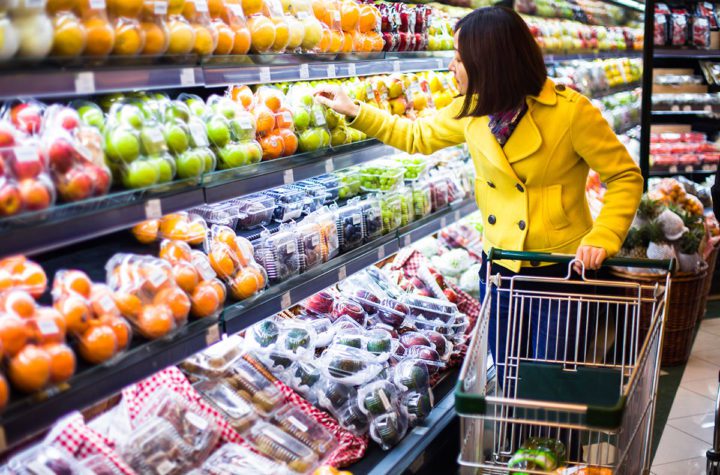Sometimes we run into the store on the way home just to get milk, and come out with a whole bag of groceries. Or we go to the mall for a jacket, and return with more jeans and sneakers. Unreasonable and impulsive purchases hit our pockets and lead to overconsumption: we use up resources faster than the planet can recover, and we can’t save for vacations.
So, let’s find out how to properly shop and control our expenses.
Why We Spend More Than We Need to
If for some people shopping is a need for satisfaction, for others, it’s a way to boost their mood, to get that “quick dopamine”. But just like eating stress with ice cream, shopping is unlikely to help you cope with anxiety. Studies have shown that while so-called retail therapy can lead to an emotional uplift, it also promises a number of problems. Among them are compulsive behavior, addiction and financial difficulties.
Start with a spending plan for the month and don’t forget to factor in major expenses: mortgage or loan payments, repair costs, or expensive purchases.
The budget should be divided into several categories: mandatory (rent, travel, food), additional (leisure and entertainment, like a Netflix subscription or playing on a Cookie Casino login website), urgent (emergency surgery, unplanned repairs) and spontaneous (emotional) expenses.
How we manage these payments determines whether we can free up funds to form a financial plan. After counting mandatory expenses, we should analyze the extras and determine what can be waived. It’s the same with spontaneous expenses – it’s generally worth allocating a certain amount of money from your budget each month for them. And it’s important to manage emergency expenses – this is handled by insurance. If you plan it all, you can allocate 20% of your income to savings.
It’s desirable for everyone to make a balanced financial plan with four parts: reserve, where it is recommended to keep three to six monthly expenses.
To implement the plan, you just need to keep a budget and release funds from it to replenish the different parts.
The less we keep track of the budget, the more we provoke uncontrolled spending. We are often pushed to spontaneous purchases, for example, by social networks. Browsing through the feed, we find ourselves unnoticed in the online store, looking for that very attractive thing from the photo. And it doesn’t matter that this chair doesn’t fit your interior, and this style of jacket doesn’t suit you at all – the “confirm order” button has already been pressed, and your balance on the card has become noticeably smaller.
In order not to turn into an avid shopaholic, save your budget and save the resources of the planet, we suggest you take note of these expert tips.
Make a List in Advance
Before going to the store, look in the fridge and think about what you need to buy. Write down everything you need in the notes on your smartphone. This way you won’t forget anything and won’t buy anything unnecessary.
It helps a lot to go to the stores strictly according to a list. Decide what you want to cook? You make a list and go shopping according to it. Need a white blouse or certain shoes? Write down specifically what you need to buy. Because most of the time we come to the store for one thing, and we leave having bought a bunch of other things we didn’t need at all.
Go Grocery Shopping After a Meal
When we’re hungry, we start stuffing carts.
Indeed, you should not go to the grocery store on an empty stomach. The feeling of hunger will now and then provoke you to put a package of cookies, an extra yogurt in the basket.
Try not to Enter Unnecessary Departments
Keep your grocery list small, so that you can organize it into categories: “groceries,” “dairy,” “fish,” and “meat.” Go only to the departments you need and pass by the unnecessary. You’ll also save time on shopping.
Compare Prices
Install an app on your smartphone that lets you find great deals on products. Compare prices in the nearest stores and go to the place where it will be more profitable to buy everything you need.
Be Careful About Promotions and Discounts
It’s nice to buy a product at a discounted price, but we don’t always analyze whether we really need it. Why would you want a discounted sweater if you weren’t going to buy it? Chances are, you’ll put it away in the closet and never wear it. It’s also not a good idea to take stock of products – you just might not have time to eat them before the expiration date.
A person is always afraid of missing out on something, especially when it comes to the opportunity to supposedly save money. This is called “lost profit syndrome.” If you are offered three items for the price of two, the second item at half price, rushing to decide to buy a product, talking about its limited quantity or a discount “only today,” “only now,” think about whether you are forced to buy more than you need or what you don’t need.
Pay Attention to Price
You probably often see numbers ending in the number 9 on price tags, and that’s a common marketing ploy.
In almost all stores, you can find price tags of 1.99 or 5.99 dollars, etc. Why is this so? Reducing the cost of a product by a ruble or a penny gives us a sense of savings. Many people think buying a product for $199.99 is more profitable than buying it for $200.00. The reason is that our brain usually pays attention only to the first number.
Leave a Limited Amount of Money in the Account
Study your list and roughly estimate how much money you’ll need for purchases. To avoid the temptation to spend too much, put a certain amount on your card.
If You Want to Save Money, Choose Items on the Lower Shelves
Don’t rush to get the items that catch your eye right away, because they tend to be more expensive than those hidden in the lower shelves. Check out the entire assortment and compare prices for the same products.
In stores, the highest-demand, higher-priced items are placed at your eye level, the inexpensive ones on the lower shelves. It’s easier for a person to pick up a product that “looks at him” than to examine the entire assortment. Store marketers don’t forget about our children. For them, the goods are placed at their eye level. That way, the child has a better chance of noticing the product and encouraging his parents to buy it.

“Avid travel ninja. Devoted pop culture fanatic. Freelance coffee enthusiast. Evil analyst.”











More Stories
In Search of Adrenaline: What Kinds of Extreme Tourism to Try
What to Do if Your Laptop Is Warm: 7 Useful Tips
Travel Essentials for a Road Trip